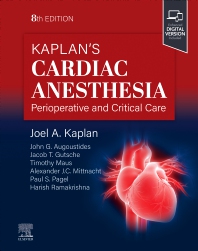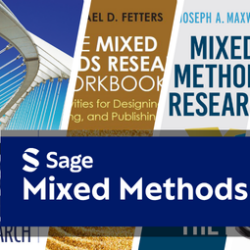カプラン心臓麻酔 (第8版)
Kaplan’s Cardiac Anesthesia Perioperative and Critical Care Management 8th edition with digital resource

Editor: Joel A. Kaplan, Dean, School of Medicine; Vice President for Health Affairs; Professor, Department of Anesthesiology, University of Louisville, Louisville, KY
2023:11 1,200 p. ISBN 978-0-323-82924-3 (Elsevier) -US-
USD 346.99
Web販売価格:税込¥58,741 / 標準価格:税込¥78,626
*2024年7月17日時点の価格です。実際の価格は、為替レートや出版社の都合により変動いたしますので、最新の価格は以下オンラインストアリンクをご参照ください。
*Web販売価格は、紀伊國屋書店BookWeb Proでご注文され、付帯作業を伴わない納品を行い、弊社標準書式による請求書を発行し遅滞なくお支払いただく場合、あるいは、クレジットカードでお支払いいただく場合に適用される販売価格です。
概要
心臓麻酔の名著カプランの7年ぶりの改訂版です。全6部、37章構成で、術前評価から心臓の術後ケア、集中治療医学までを詳説します。
本書は、心臓麻酔分野を代表する国際的な著者陣による実践ガイドです。心臓手術、心臓外科の麻酔の手技に伴う章はもとより、心臓や冠動脈に関わる生理学、心臓以外の手術の際に用いる心臓麻酔についても詳述します。また、今日の臨床課題、集中治療医学についての従来よりも幅広い解説、最新の周術期評価と管理のアプローチ、循環器と冠動脈の生理学についての章を収録いたします。周術期の転帰を良好に保ち、併発症を避け、患者の安全を最大限に保障するために役立つ情報を提供いたします。
心臓胸部麻酔に関わる領域を包括的にカバーする必須レファレンスである本書を、おすすめいたします。
価格照会・ご購入
- 紀伊國屋書店でご購入(一般の方向け):紀伊國屋書店ウェブストア
- 紀伊國屋書店でご購入(法人の方向け):紀伊國屋書店BookWeb Pro
※本件についてのお問い合わせ、お見積りについては最寄りの紀伊國屋書店営業所もしくはこちらまでお願いいたします。
内容明細
Section 1. Preoperative Assessment and Cardiac Management
Cardiology Consultation and Assessment of Cardiac Risk1
Major Adverse Outcomes in Cardiac Surgery
Assessment of Perioperative Myocardial Injury in Cardiac Surgery
Assessment of Myocardial Injury and Infarction
Cardiac Risk Assessment and Cardiac Risk Stratification Models in Patients Undergoing Cardiac Surgery
Specific Risk Conditions
Cardiovascular Imaging in Preoperative Evaluation
Myocardial Nuclear Scintigraphy
Cardiac Computed Tomography
Cardiovascular Magnetic Resonance Imaging
2. The Cardiac Catheterization Laboratory: Diagnostic and Therapeutic Procedures in the Adult Patient
Introduction
Catheterization Laboratory Facilities
Patient Selection for Catheterization
Cardiac Catheterization Procedures
Valvular Pathology
Angiography
Interventional Cardiology: Percutaneous Coronary Intervention
Specific Interventional Devices
Other Catheter-Based Percutaneous Therapies
The Catheterization Laboratory and the Anesthesiologist
3. Cardiac Implantable Electronic DevicesPeter M. Schulman, MDEric C. Stecker, MD, MPH
Cardiac Implantable Electronic Device Function
Cardiac Implantable Electronic Device Indications
Modes of Operation
Perioperative Risk
Perioperative Evaluation and Management
4. The Cardiorespiratory Effects of COVID-19
The COVID-19 Pandemic
SARS-CoV-2 Pathophysiology
COVID-19 and Cardiovascular Risk Factors
Cardiovascular Manifestations of COVID-19
COVID-19 Pulmonary Effects
COVID-19–Associated Coagulopathy and Antithrombotic Agents
COVID-19 Renal Manifestations
COVID-19 Neurologic Manifestations
Postacute Sequelae of SARS-CoV-2 Infection
Impact of COVID-19 on Cardiac Surgery
COVID-19 Safety in Cardiothoracic Surgery and Anesthesia
Perioperative Management of COVID-19 Patients Undergoing Cardiothoracic Surgery
COVID-19 and Comorbidities
Section 2. Cardiac Physiology and Pharmacology
5. Cardiac Physiology
Functional Implications of Cardiac Anatomy
Cardiac Myocyte Anatomy and Function
Laplace’s Law
The Cardiac Cycle
Determinants of Pump Performance
Myocardial Contractility
Coupling, Energetics, and Efficiency
Evaluation of Diastolic Function
Isovolumic Relaxation
Left Ventricular Filling
Passive Mechanical Behavior
Pericardial Restraint
Determinants of Atrial Function
Pathophysiology of Heart Failure
HFrEF Versus HFpEF: Differences in Presentation
Modulators of Nitric Oxide Metabolism
Other Medications
Lifestyle Modifications, Control of Comorbidities, and Other Interventions
Conflicts of Interest
6. Coronary Physiology
Poiseuille’s Law
Coronary Vascular Anatomy
Mechanisms of Coronary Blood Flow Regulation
Clinical Implications
7. Cardiovascular Pharmacology of Anesthetics
Volatile Anesthetics
Nitrous Oxide
Propofol
Midazolam
Etomidate
Ketamine
Dexmedetomidine
Synthetic Opioids
Summary
Conflict of Interest
8. Cardiovascular Pharmacology
Antiischemic Drug Therapy
Current Therapeutic Approaches to Systemic Hypertension
Pharmacotherapy for Pulmonary Hypertension
Pharmacotherapy for Acute and Chronic Heart Failure
Pharmacotherapy for Cardiac Arrhythmias
Section 3. Monitoring
9. Monitoring of the Heart and Vascular System
Electrocardiography
Appendix 9.1. Electrocardiogram Atlas: A Summary of Important Changes on the Electrocardiogram
10. Basic Intraoperative Transesophageal EchocardiographyPlease provide the Abstract and Keywords for this chapterPlease check the hierarchy of the section headings–>
Introduction
Basic Concepts
Imaging Techniques
Echocardiographic Scanners
Equipment
Image Creation and Storage
Complications and Safety
Credentialing
Technique of Probe Passage
Comprehensive Intraoperative Multiplane Transesophageal Echocardiographic Examination
Anatomic Variants and Artifacts
Clinical Applications
Hemodynamic Assessment
Cardiac Output
Contrast Applications
Myocardial Ischemia Monitoring
Chapter 11. Transesophageal Echocardiography: Advanced Echocardiography Concepts
The Development of a Perioperative Echocardiography Service
Three-Dimensional Transesophageal Echocardiography
Perioperative Echocardiographic Evaluation of Valves
Aortic Valve
Transesophageal Echocardiography for Interventional Procedures
Transesophageal Echocardiography for Mechanical Circulatory Support
Transesophageal Echocardiography for Transplantation
Strain, Strain Rate, and Doppler Tissue Imaging
Myocardial Disease
Aortic Evaluation
Pericardial Disease
Evaluation of Cardiac Masses
12. Central Nervous System Monitoring
Introduction
Electroencephalography
Auditory-Evoked Potentials
Transcranial Doppler Ultrasound
Jugular Bulb Oximetry
Cerebral Oximetry
Multimodality Neuromonitoring
Summary
Disclosure and Acknowledgment
13. Coagulation Monitoring
Hemostasis
Monitoring Heparin Effect
Heparin Neutralization
Tests of Coagulation
Monitoring Fibrinolysis
Monitoring the Thrombin Inhibitors
Monitoring Platelet Function
Bedside Coagulation and Platelet Function Testing
Summary
Section 4. Anesthesia for Cardiac Surgery/Procedures
14. Anesthesia for Myocardial Revascularization
Epidemiology of Coronary Artery Disease
Risk Assessment in Patients Scheduled for Coronary Artery Bypass Grafting
Anesthesia for Coronary Artery Bypass Grafting
Surgical Considerations
Conclusions
15. Valvular Heart Disease: Repair and Replacement
Pathophysiology
Aortic Stenosis
Aortic Regurgitation
Mitral Stenosis
Mitral Regurgitation
Tricuspid Regurgitation
16. Adult Congenital Heart Disease
Introduction
Shunting
Pulmonary Hypertension
Eisenmenger Syndrome
Pulmonary Hypertensive Crisis
Fontan Circulation
Specific Lesions
Unique Anesthesia Considerations
17. Thoracic Aorta
Anatomy of the Aorta
General Considerations for the Perioperative Care of Aortic Surgical Patients
Thoracic Aortic Aneurysms
Ascending Aorta and Arch Aneurysms
Aortic Dissection
Penetrating Atherosclerotic Ulcer
Traumatic Aortic Injury
Aortic Atheromatous Disease
Takayasu Arteritis
Aortic Coarctation
Summary
18. Uncommon Cardiac Diseases
Cardiac Tumors
Selected Tumors With Cardiac Manifestations
Cardiomyopathy
Selected Unclassified Cardiomyopathies
Pericardial Heart Disease
Coronary Arteriovenous Fistula
19. Cardiac Transplantation
Introduction
Considerations in Recipient Management Recipient Selection
Considerations in Donor Management
Anesthetic Considerations
Surgical Approach
Management Considerations After Heart Transplantation
Heart-Lung Transplantation
Conclusion
20. Lung Transplantation
Pretransplantation Considerations
Preoperative Assessment
Initial Intraoperative Management
Further Intraoperative Management Prior to Lung Implantation
Donor Considerations in Lung Transplantation
Surgical Techniques in Lung Transplantation
Further Intraoperative Management After Lung Implantation
Early Postoperative Management
Special Populations
Conclusion
21. Pulmonary Thromboendarterectomy for Chronic Thromboembolic Pulmonary Hypertension
Classification of Pulmonary Hypertension
Pathophysiology
Clinical Manifestations
Diagnostic Evaluation
Operation
Anesthetic Management of Patients Undergoing Pulmonary Thromboendarterectomy
Special Considerations
Management of the Postoperative Patient
Nonsurgical Approach to Chronic Thromboembolic Disease
Intraoperative Echocardiography in Patients With Chronic Thromboembolic Pulmonary Hypertension
Pulmonary Thromboendarterectomy in Patients With Sickle Cell Disease
Outcome and Future of Chronic Thromboembolic Pulmonary Hypertension
22. Durable Mechanical Circulatory Assist Devices for Heart Failure
A Golden Era of Mechanical Circulatory Support
Mechanical Circulatory Support: Theory and Practice
Long-Term Support
HeartMate 3 Left Ventricular Assist Device
Complications of Left Ventricular Assist Device Support
Perioperative Anesthetic Considerations for Patients Requiring Left Ventricular Assist Device Support
Total Artificial Hearts
Anesthetic Considerations for Total Artificial Heart Implantation
Conclusion
23. Structural Heart Disease Procedures
Transcatheter Aortic Valve Procedures
24. Electrophysiology Procedures
Supraventricular Tachycardia
Anesthetic Approach to Electrophysiologic Ablation for Supraventricular Tachycardia
Anesthetic Approach to Electrophysiologic Ablation for Ventricular Tachycardia
Atrial Fibrillation
Anesthetic Approach to Transcatheter Ablation of Atrial Fibrillation
Atrial Flutter
Wolff-Parkinson-White Syndrome
Leadless Pacing Systems
Innovative Approaches to Permanent Cardiac Pacing
Section 5. Extracorporeal Circulation
25. Cardiopulmonary Bypass: Pathophysiology and Management
Pathophysiology of Cardiopulmonary Bypass
Management of Cardiopulmonary Bypass
Special Patient Populations for Cardiopulmonary Bypass
Complications of Cardiopulmonary Bypass
The Extracorporeal Circuit
Summary
26. Discontinuing Cardiopulmonary Bypass
Routine Weaning From Cardiopulmonary Bypass
Transesophageal Echocardiography and Bypass
Management of Challenging Cardiopulmonary Bypass Separation
27. Extracorporeal Membrane Oxygenation
History, Evolution, and Current Status of ECMO
ECMO Physiology and Gas Exchange
ECMO for Hemodynamic Support
Cannulation for Venoarterial ECMO
Management of Venoarterial ECMO
Expanded Indications for Venoarterial ECMO
ECMO for Respiratory Support
Venovenous ECMO for COVID-19
Expanded Indications for Venovenous ECMO
Alternate ECMO Cannulation Strategies
Complications in ECMO
Summary
28. Coagulation and Transfusion Management
Overview of Hemostasis
Heparin for Anticoagulation in Cardiopulmonary Bypass
Alternative Parenteral Anticoagulants to Heparin
Bleeding in Cardiac Surgery
Transfusion Medicine: Blood and Components
Perioperative Blood Conservation Strategies
Transfusion Reactions
Section 6. Postoperative Care/Critical Care Medicine
29. Enhanced Recovery Programs in Cardiac Surgery
History of Quality Improvement in Cardiac Surgery
Principles of Enhanced Recovery Programs
Enhanced Recovery After Cardiac Surgery Society Guidelines
Elements for Cardiac Surgery-Enhanced Recovery Programs
Data Collection, Audit, and Feedback
Program Implementation
Conclusion
30. Pain Management for the Cardiac Patient
Pain and Cardiac Surgery
Potential Benefits of Adequate Postoperative Analgesia
Techniques Available for Postoperative Analgesia
Local Anesthetic Infiltration
Regional Analgesic Techniques
Opioids
Patient-Controlled Analgesia
Adjunctive Analgesia
Nonsteroidal Antiinflammatory Agents
Acetaminophen
α2-Adrenergic Agonists
Gabapentinoids
Ketamine
Magnesium
Intrathecal and Epidural Techniques
Intrathecal Techniques
Epidural Techniques
Multimodal Analgesia
How Important Is Postoperative Pain After Cardiac Surgery?
Conclusions
31. Central Nervous System Dysfunction After Cardiac Surgery
Categorization of Central Nervous System Injury
Watershed Infarction
Mechanisms of Brain Injury
Cerebroprotective Strategies
Procedural Risk
Management of Perioperative Acute Ischemic Stroke
Conclusion
32. Critical Care Ultrasound
Introduction
Airway Ultrasound
Lung and Diaphragm Ultrasound
Critical Care Echocardiography
Gastric Ultrasound
Imaging of the Abdomen and Pelvis
Vascular Ultrasound
Summary
33. Postoperative Respiratory Care
Risk Factors for Pulmonary Insufficiency
Mechanical Ventilation
Managing Perioperative Conditions
Acute Respiratory Distress Syndrome
Obstructive Airways Disease
Patent Foramen Ovale
Pericardial Effusion/Cardiac Tamponade
Infectious Complications
Summary
34. Postoperative Cardiovascular Management
Oxygen Transport
Temperature
Assessment of the Circulation
Postoperative Myocardial Dysfunction
Postoperative Myocardial Ischemia
Therapeutic Interventions
Postoperative Hypertension
Postoperative Vasodilation
Coronary Artery Spasm
Decreased Contractility
Right Heart Failure
Cardiac Tamponade
Transplanted Heart
Advances in Cardiovascular Procedures and Postoperative Management
35. Intensive Care Unit Management of Patients on Mechanical Circulatory Support
Introduction and Historical Context
Indications for Mechanical Circulatory Support
Mechanical Circulatory Support Devices
Echocardiography for Temporary Devices
Hemodynamic Goals
Anticoagulation for Mechanical Circulatory Support Devices
Infection Surveillance and Prevention
Hemolysis, Transfusion, and Hemostasis Management
Arrhythmias, Cardiac Arrest, and Cardiopulmonary Resuscitation
Mobility, Physical Therapy, and Nutrition
Triage Pathway for Patients on Temporary Mechanical Circulatory Support
Ethical Considerations
36. Postoperative Care of the Heart and Lung Transplant Patient
Postoperative Heart Transplant Management
Postoperative Lung Transplant Management
Conclusion
37. General Critical Care
Renal Considerations in Critical Care
Endocrine Considerations
Infectious Disease and the Cardiac Surgical Patient
General Critical Care Bundles
Nutrition in the Intensive Care Unit
Summary
Index





